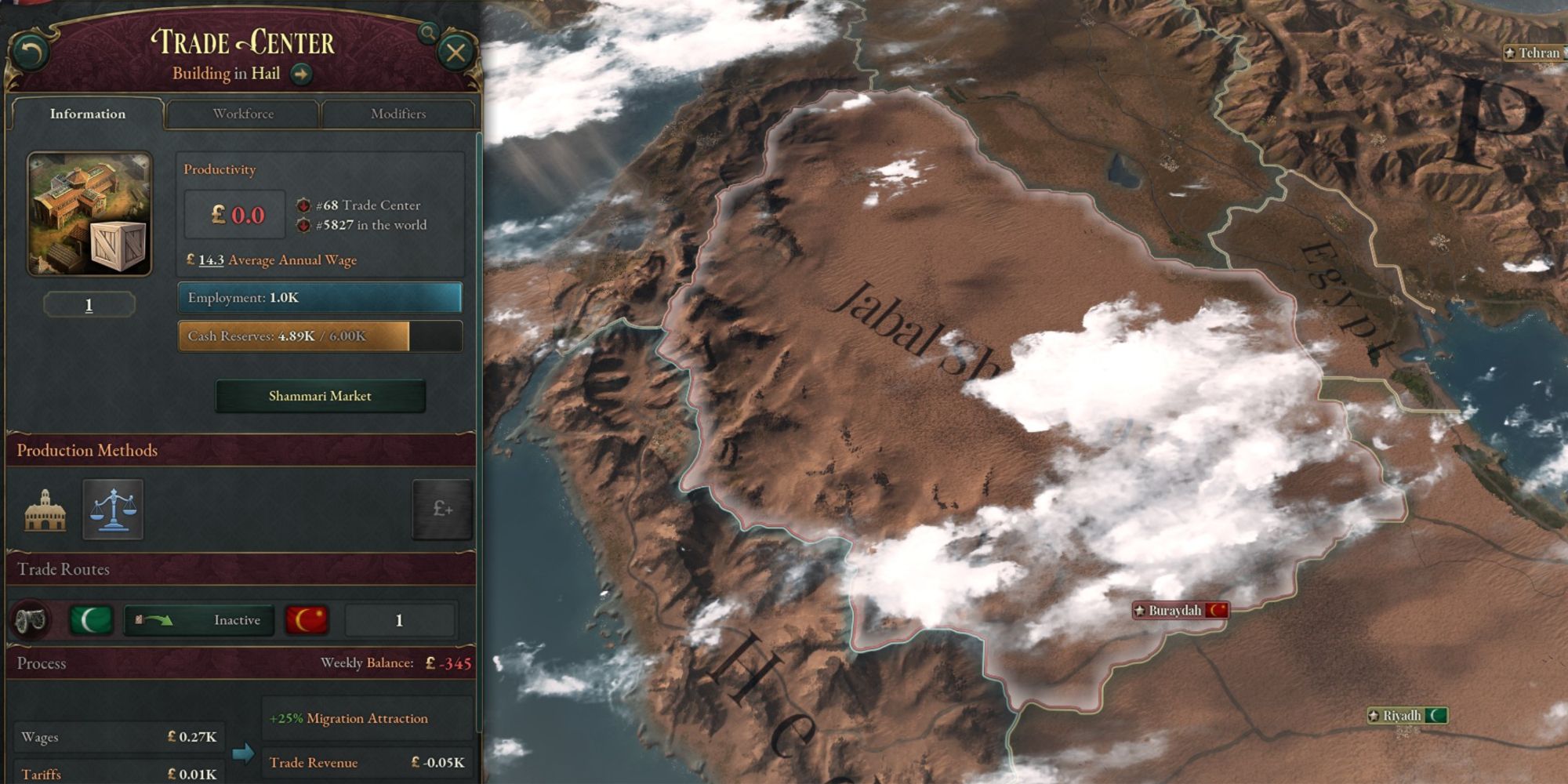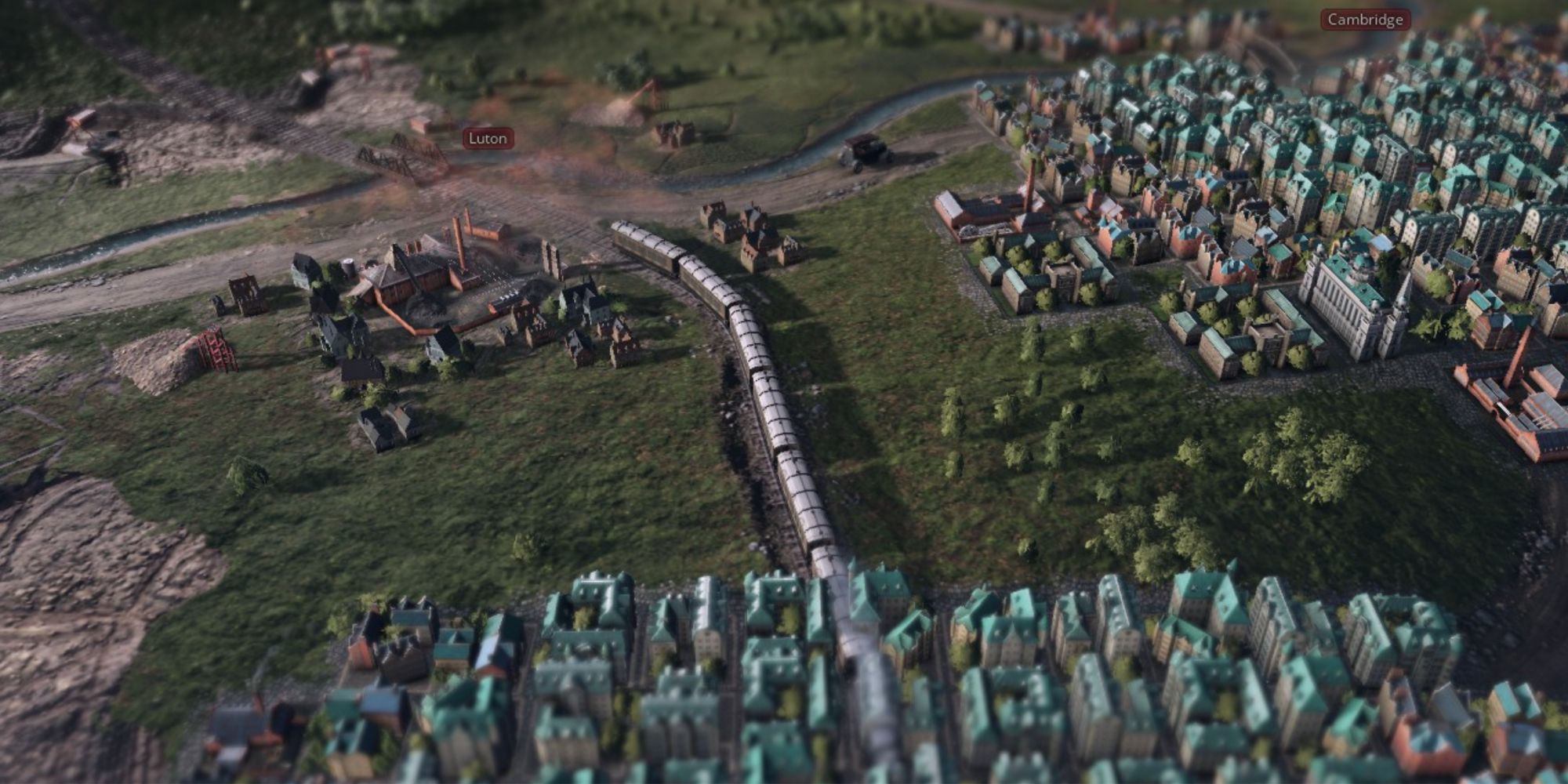If Pops are the lifeblood of a nation in Victoria 3, then buildings are the arteries they pump through. Knowing how, when, and what to build is an important thing to get a handle of in most strategy games, and Victoria is no exception – managing the makeup of your states is a crucial skill to learn.
It is from buildings that you’ll exploit your land and your states, how you move your population into gainful employment, and how to connect your peoples both to each other and with the outside world. It’s also easy to muck things up – overexpansion is a curse in a game where money is everything, and plunging your Pops into debt as a result of poor planning is a surefire way to get a revolution on your hands.
Types Of Building
In Victoria 3, there are three different types of buildings. Rural buildings are used primarily to harvest resources from the land – the Rural buildings you can construct in any one state largely depend on the state’s natural resources. You won’t be able to build a Logging Camp in a state that has no forests, for example. In addition to these typical resource buildings, there’s also a certain amount of Arable Land attributed to a state, and here you can build farms or leave them as Subsistence Farms – more on that later.
Conversely, Urban buildings are a little different. Like most other buildings, they’ll take in Goods and turn them into different, usually more expensive Goods, but they also contribute a certain about of Urbanization to a state. When a state’s Urbanization hits a new multiple of 100, it’ll expand a building called an Urban Center, which cannot be expanded in any other way. Urban Centers are staffed like other buildings and represent markets and services, and they are key to maintaining a healthy economy. Similar to Urban Centers are Trade Centers, which grow as you focus more effort and money into trade routes and also employ lots of Pops.
Development buildings are a little more unique – these buildings are crucial to the running of your country but do little in the way of making money. These buildings include those used in war, those used for moving goods and Pops around, and those used for the construction of all other buildings.
Arable Land And Subsistence Farming
All states have a predetermined amount of Arable Land for use at the beginning of the game. When you build or expand a Farming building in a state, you use up one unit of that Arable Land, whether it’s a Livestock Ranch, Rye Farm, or one of the many plantations available in the game. These all fall under the Agriculture heading, which is a subset of Rural.
Unused Arable Land is automatically used for Subsistence Farming by peasants. Subsistence Farms produce a variety of goods that the peasants will use to fulfill their meager needs, but they’ll also sell some of it and let it enter the national market. The issue is that Subsistence Farms are bad at both providing for needs and for profit, so it’s a good idea to draw as many peasants into gainful employment as possible. A good way to do this is to use up a lot of your Arable Land, but also to make sure there’s enough entry-level employment opportunities available.
Urban Centers
Urban Centers pop up in your states after building a certain amount of Urban buildings. Specifically, a state’s Urban Center will increase in size by one level for every 100 Urbanization it has, and Urbanization is a resource generated in most buildings, but mostly in Urban buildings.
You won’t find Urban Centers as normal building tiles in the Buildings menu of a state – instead, there’s a bar at the top that tells you its Urban Center’s size. Click on this to go to the more traditional building screen that lets you know the details of its employment and also alter its production methods.
Urban Centers are important as they are the primary producer of Services, a Good that cannot be imported and is important for the needs of wealthier Pops.
If you want to increase the size of your Urban Centers, build and expand the buildings that contribute the most Urbanization: Government Administration, Motor Industries, Power Plants, Electrics Industries, and most other Urban buildings. Naturally, it’s easier to raise your Urbanization as you get later into the game.
Trade Centers
Trade Centers, like Urban Centers, cannot be built directly. Instead, they pop up as a result of your trade routes. They’ll be constructed automatically in the states responsible for such trades, and contribute a hefty amount of Urbanization to a state.
Trade Centers don’t produce anything or consume anything like other buildings, but they will employ a large amount of Pops and are how you can contribute massively to the economy through trade – both through tariffs and through enriching your Pops.
Government Administration
Government Administration is a special Urban building that doesn’t produce a typical resource like other buildings do. Instead, Government Administration buildings raise two things: Bureaucracy and Taxation Capacity.
- Bureaucracy is very important – you use it to promote generals, sustain your incorporated states, supply your government institutions, and support your trade routes. Without a positive Bureaucracy, your economy tanks in a big way and you’ll be unable to keep your country running smoothly.
- Taxation Capacity is also very important. Taxes are where you’ll get a very large proportion of your income, allowing you to fund construction projects and everything else required for running a nation. Every point of Taxation Capacity can sustain 10,000 Pops and their taxes – if your population grows larger than your Taxation Capacity, you’re letting precious money get wasted into the ether.
The best way to increase both of these variables is through Government Administration buildings, and since Taxation Capacity is a state-specific stat, you’ll likely want them in most every state.
Infrastructure
There are two buildings in the game that provide a state with Infrastructure, which is crucial to maintaining a healthy economy and supporting your supply chains. These are Ports and Railways.
- Ports give your states Infrastructure but that’s largely a fringe benefit. Ports are primarily used to increase your number of Convoys, which is required and important for overseas trade.
- Railways, on the other hand, are vastly better at providing states with Infrastructure. Note, however, that improving the production methods reduces the amount of Infrastructure they provide in exchange for a higher Transport production.
Construction Sectors
Construction Sectors are the final type of building we’ll look at – they contribute Construction, which is a representation of your ability to, well, construct buildings. The higher your Construction, the quicker you’ll be able to build and expand your buildings.
It is important to note that Construction is incredibly expensive. While it is possible and even recommended sometimes to queue up many months, even years, of construction in advance, construction requires lots of Goods and money. This can put a strain on your economy.
It is for this reason that we recommend being extra thoughtful when it comes to large building projects and being liberal with the Automatic Expansion feature, especially when you don’t have much gold in reserve.
When To Expand Buildings
A good rule of thumb is to expand buildings when they reach the same prerequisites that they would for Automatic Expansion, to whit:
- The building’s cash reserves being over 95 percent full.
- The state in question having sufficient market access thanks to their infrastructure.
In addition to these, try to only upgrade buildings that are fully or nearly fully employed. These are the buildings that are doing very well and are the ones that are most likely to be able to handle the larger employment maximums and Goods production.
There are some times that you would prefer to hold off expanding, though. If it uses a Good that you struggle to produce or produces a Good that you have a giant surplus of, it wouldn’t be beneficial to expand just yet.
That said, there are some buildings that are almost always good candidates for expansion – these include buildings that harvest raw materials, such as Iron Mines and Whaling Stations, and buildings that use Arable Land.














